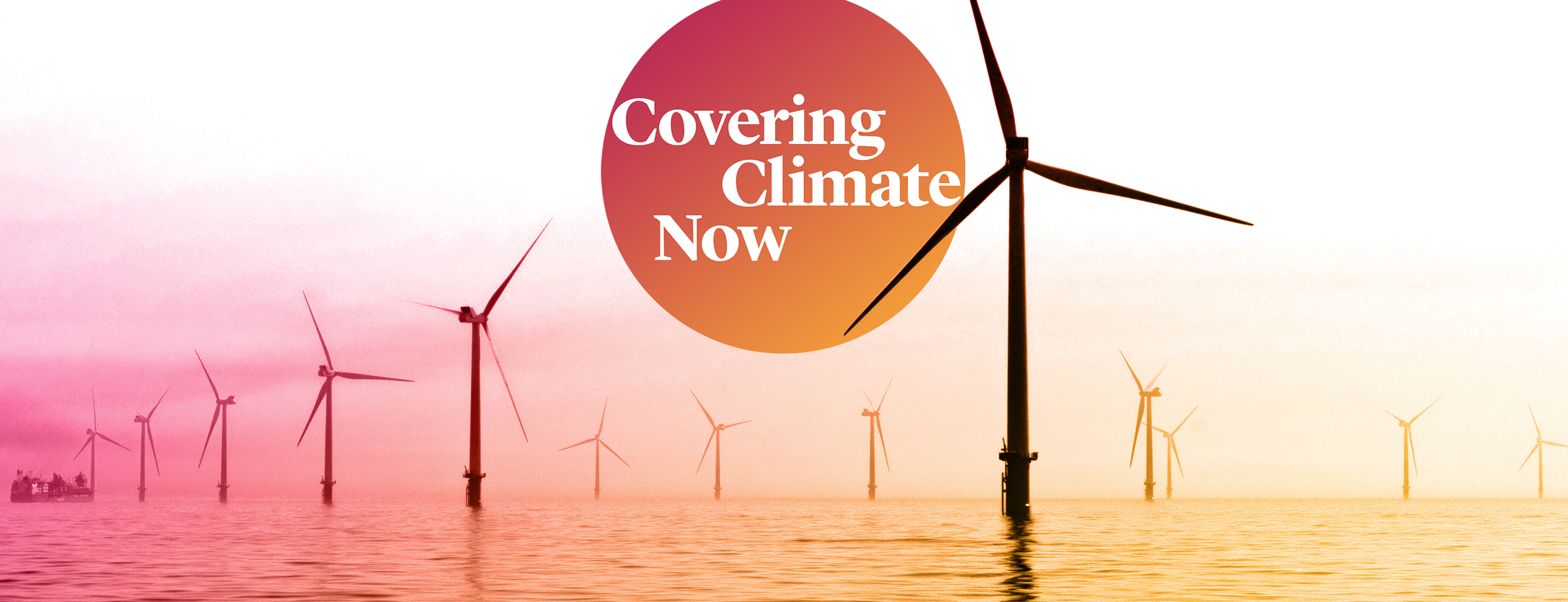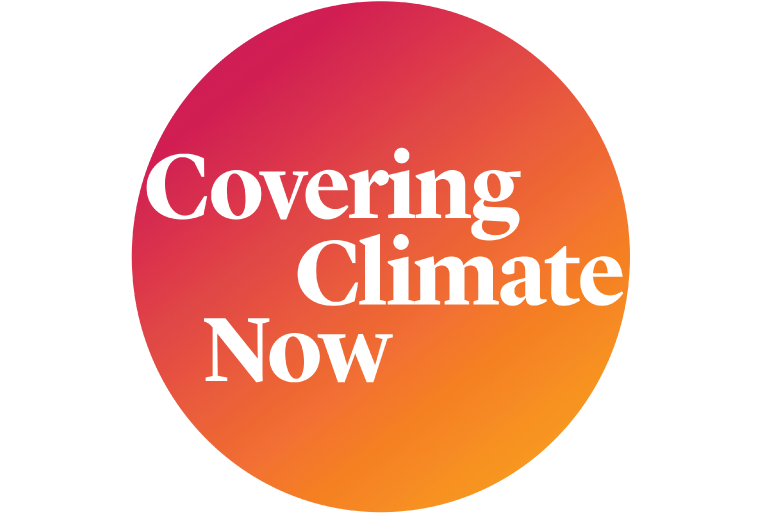Three years ago, we started Covering Climate Now in hopes of closing the gap that existed between the enormity of the climate crisis and the efforts of journalism to cover it. We are, finally, starting to see progress.
The improvement is, in part, a result of the persistence and diligence of thousands of journalists around the world, many of them our partners and some of them recipients of this year’s second-annual Covering Climate Now Journalism Awards. You can see some of their excellent work in “Burning Questions,” a one-hour TV special Covering Climate Now produced, which broadcasts and begins streaming tonight, October 25, at 8pm US Eastern Time/5pm Pacific on public television’s WORLD channel.
Frankly, though, the journalism about climate change is also getting better because everyday people can look out the window and see for themselves that something is deeply wrong. The relentless severity of the unfolding climate crisis has become impossible to ignore. Audiences have started paying closer attention, spurring the best newsrooms to supply more reporting that meets the urgency of the moment.
That coverage is resonating with audiences partly because it is focusing on human beings more than on abstract science—and it is human beings, everywhere, who are enduring worsening heat, drought, flooding, and other manifestations of the rapidly overheating planet. The effects are felt disproportionately among marginalized communities and people of color around the world. But it’s happening to everybody. Nobody is exempt.
More newsrooms are finally recognizing that. Through our work at Covering Climate Now, and through the work of our colleagues who have won this year’s awards, we have seen journalists find really creative and poignant ways to shine the spotlight on who’s affected by this onrushing crisis.
We saw videos of kids who live—actually, used to live—on a farm in Iowa where year after year of erratic weather made it economically infeasible to continue and the family moved away. We heard songs from people living alongside a river in India, people who had been displaced by worsening floods and were memorializing their grief in song. We saw photographs from Iraq of marsh-dwelling people in the once Fertile Crescent, where incomprehensible heat waves (125 degrees Fahrenheit) have made normal life impossible. The effects of climate change can be unspeakably sad, but they can also yield unforgettable journalism.
For too long, newsrooms were silent about the climate crisis. They bogged themselves down in fake debates and dubious science. There was a wariness of the climate story, grounded in fears that it was depressing, would trigger nasty emails from ideologues, and besides, hadn’t audiences heard it all before? For too long, too many simply gave up on the story, even as the earth hurtled toward disaster.
More journalists are now saying that we’ve got to figure out a way to tell the climate story that gets beyond those outdated presumptions. It is our profession’s good fortune that this shift to more human-focused climate coverage plays to our strengths. We’re storytellers. And now, finally, more of our profession is bringing determination and creativity to our telling of this unavoidably human story.
Where does the climate story go next? The narrative needs to move towards solutions. And there is good reason to think that audiences are primed for this shift.
Covering Climate Now is working to develop guidance on how to do climate solutions reporting with journalistic rigor and integrity. A core principle is that good solutions reporting does not cheerlead for this or that approach; it interrogates those approaches and informs the public and policymakers about which ones work and which don’t.
There is one specific climate solution for which journalism is uniquely well-suited. “One of the most important things anyone can do about climate change is to talk about it,” said Katharine Hayhoe, the chief scientist at The Nature Conservancy and an acclaimed climate communicator. “And no one talks to more people than you [in the media] do,” she added. Running more climate stories signals to the public that climate change matters, and running more solutions stories signals that something can be done about it. Which helps explain why Covering Climate Now calls better journalism an essential climate solution: because it can help educate large numbers of people about what’s going on—and how to turn things around before it’s too late.




